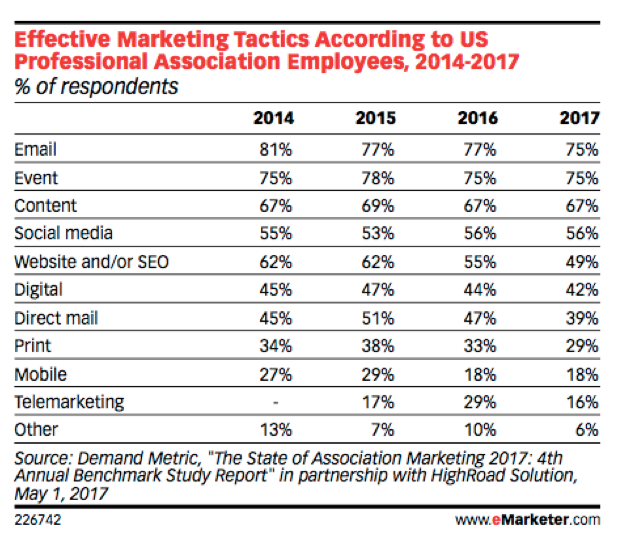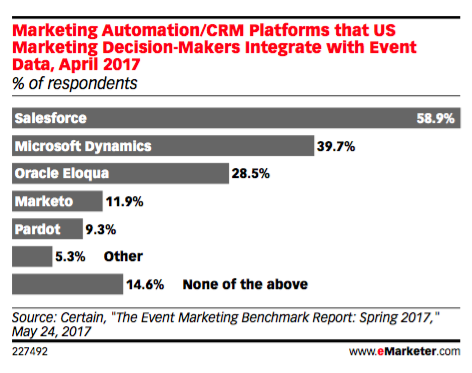B2B Tech
How Technology Is Revolutionizing B2B Events
When you’re inundated with the glories of digital marketing every day, we can start to forget that in-person events still make up such an important part of the marketing stack. Events can be chaotic, complicated, and expensive. Yet in B2B marketing, there’s a reason they’re still incredibly popular.
According to a report from market research firm Demand Metric, events are second only to email when it comes to the most effective B2B marketing tactics.

Per the report, 85 percent of B2B marketers say events are either “critical” or “very important” for accelerating the sales pipeline and driving revenue. In total, events make up about a fifth of marketing spend at B2B companies, according to Forrester Research and Boston Consulting Group.
It makes sense that there is still plenty of confidence in event marketing. Talk to any salespeople and they’ll tell you about the significance of face-to-face sales opportunities. The B2B space cares just as much about relationships as it does hard numbers, and events are a critical way to foster them.
But that doesn’t mean B2B events aren’t affected by the digital revolution. A recent study from eMarketer shows that a new events technology stack makes all those conferences and salons more effective than ever.
Data and ROI
It’s not uncommon for event marketers to be siloed from the rest of the marketing department. The events team gathers opportunities from sales, slots them into a spreadsheet, and then salespeople try to influence prospects and close deals during the event.
That process leads to a lot of informality. The events team can take credit for any closed opportunity that attended a conference, while salespeople are just happy to have made commission. As a result, if business is going well, both sides may be content with the status quo instead of pushing to re-evaluate and improve.
Most marketers already use CRMs like Salesforce to track and attribute deal accelerations to events. But there’s plenty of room to build a data-driven process. As of this spring, 15 percent of decision-makers don’t integrate their event data into a CRM at all.

The event stack has the power to become much more sophisticated. Marketers are increasingly beginning to track as much as they can about the event, not just deals won and lost. For example, tracking lead quality of your function offers a much more nuanced view of how to improve future events.
Integrating events into marketing automation platforms like Marketo is also becoming more common. Most B2B marketers understand the importance of quick follow-ups, and marketing automation platforms can speed up post-event sales touches and make them more personalized.
Another important practice that’s often overlooked is monitoring the performance of landing pages on your site. Optimizing landing pages for conversions is key, but so is tracking conversion all the way from landing pages to lead generation.
This all goes to show that events, despite being in-person, and should be tightly integrated into the rest of the marketing technology stack.
Beacons and the IoT
As back-end software improves the business case for events, the Internet of Things and other advanced technology is also transforming how marketers track attendee experience inside the conference hall.
Take Content Marketing World. This year, according to Cathy McPhillips, VP of marketing at CMI, attendees will now scan into sessions using radio-frequency identification (RFID) badges. As a result, CMI can get accurate views of who attended what and see which sessions were most popular—a gold mine of data for salespeople and the events team.
Other companies use apps in a similar way to track attendee flow and gather information on attendees. Of course, not everyone will download the app; the data won’t be a complete picture of every attendee. But new technologies like wearable beacons should simplify tracking the attendee experience easier. South by Southwest already uses the tech to gather massive amounts of data on when and where people go during the event.
This system benefits attendees as well. The beacons can help them find a path to the next session, provide personalized recommendations, and even connect them with fellow attendees for networking.
If it all sounds a bit creepy, well, you’re not necessarily wrong. The question for marketers is whether they can balance improving the attendee experience with asking for more data. If they can nail that balance, they can make a longstanding cornerstone of B2B marketing more powerful than ever.
Image by Bill McCulloughGet better at your job right now.
Read our monthly newsletter to master content marketing. It’s made for marketers, creators, and everyone in between.




